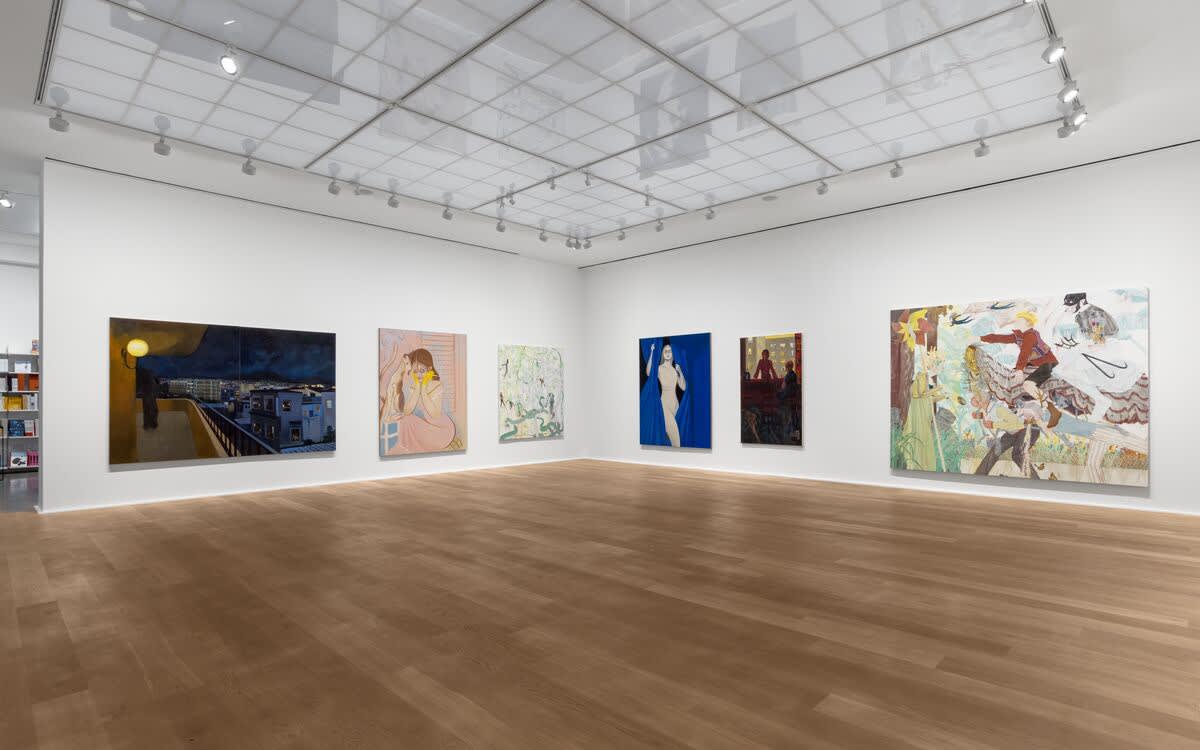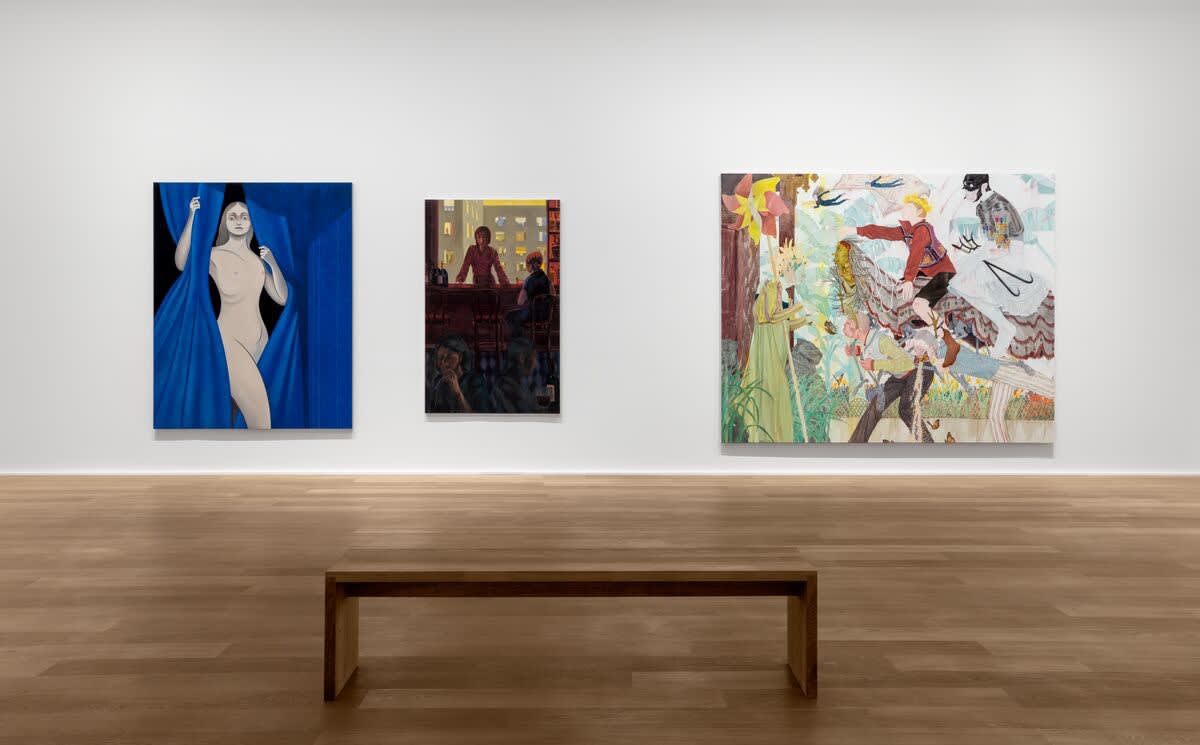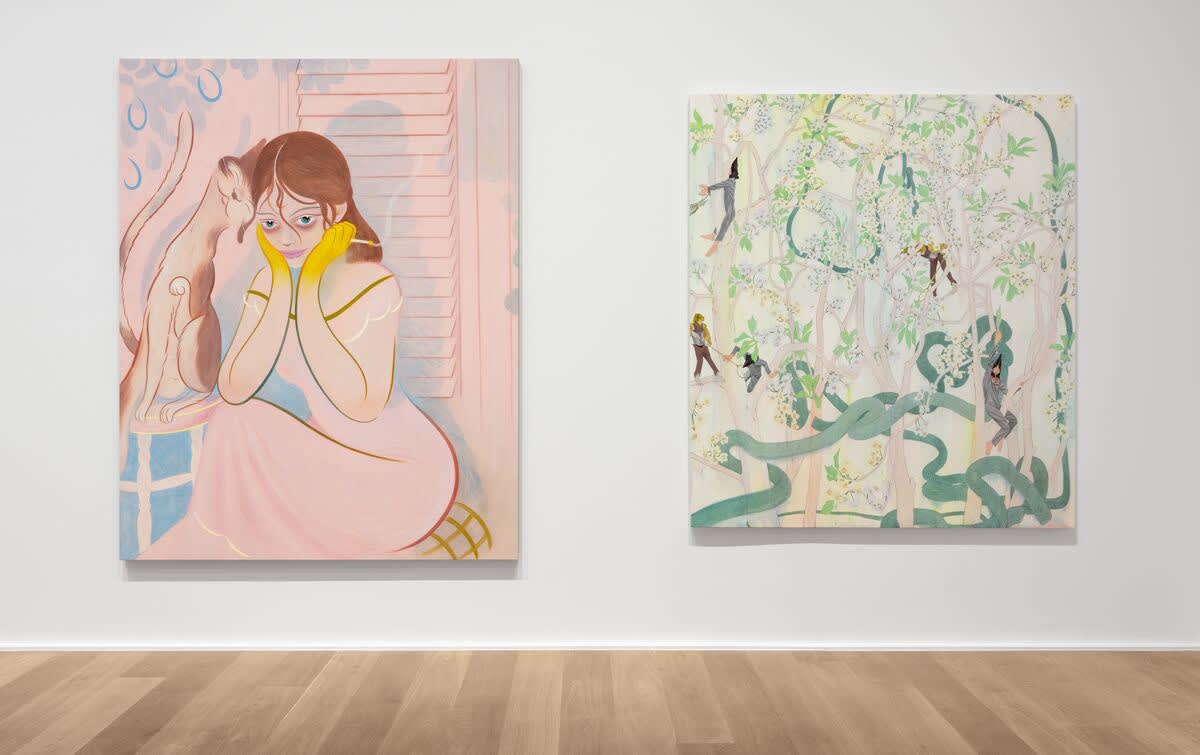22 August - 20 September 2025
Enter interior worlds imagined by contemporary painters Koak, Cece Philips and Ding Shilun this summer at Hauser & Wirth London. The exhibition explores how these artists engage with the interior both as a physical space and a psychological construct. Through distinct painterly vocabularies, each artist interrogates the architectural and domestic environments we inhabit, revealing how these frameworks shape our sense of self, memory and belonging. ‘Interior Motives’ is part of an ongoing initiative at Hauser & Wirth that champions emerging and mid-career artists beyond the gallery’s roster. Produced in collaboration with Union Pacific and Bernheim Gallery, this exhibition reflects a shared commitment to a sustainable arts ecosystem.
Depicting figures in dreamlike domestic interiors, Koak’s painting practice questions the societal expectations and roles of women within the home as well as the traditional portrayal of women by male artists. With a graphic aesthetic that borrows from Japanese and European animations, Koak uses familiar iconography of the home—windows, soft furnishings, flowerpots and vases—to build alternate interiors in which her figures are liberated and given agency. Her contemporary take on art historical depictions of domestic scenes is achieved through a vibrant color palette that blurs the distinction between the imagined and real, between inner and outer worlds, her female gaze highlighting both the emotional and physical experience of her figures.
The architectural tropes characteristic of household settings, from windows and doorways to hallways and walls, act as visual framing devices in Cece Philips’ paintings. Radiant light is a hallmark of her practice, drawing viewers into the work and leading them through the interiors, yet they are never part of the scene, observing like a flaneur. Like paintings of everyday, domestic life from the Dutch Golden Age and by Félix Vallotton, a narrative is implied—one in which Philips leaves the viewer to fill in the details, encouraged by their imagination and own inner worlds. The use of color adds a layer to the narrative by suggesting a psychological reading, reflecting the figures’ mood and internal realities, as well as that of the viewer. This exploration of interiority is at once about the subject and the viewer, observation and introspection.
Inhabiting imaginary worlds, the characters in Ding Shilun’s paintings are often an embodiment of the artist himself, the emotions he feels and the thoughts inside his mind. His worldbuilding relies on everyday objects found in domestic spaces to enable viewers to identify with the characters depicted and emotions evoked. With a style inspired by Japanese manga and traditional Chinese painting, the artist’s interiors include fantastical and mythological elements that question viewer’s perception of reality. Influenced by both global historical events, current affairs and his own experiences, Ding Shilun’s manifestation of his interior realm doubles up as a visual representation of the absurdity of daily life.



